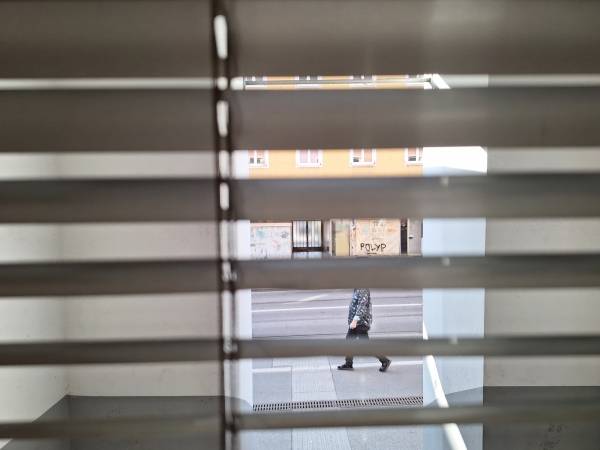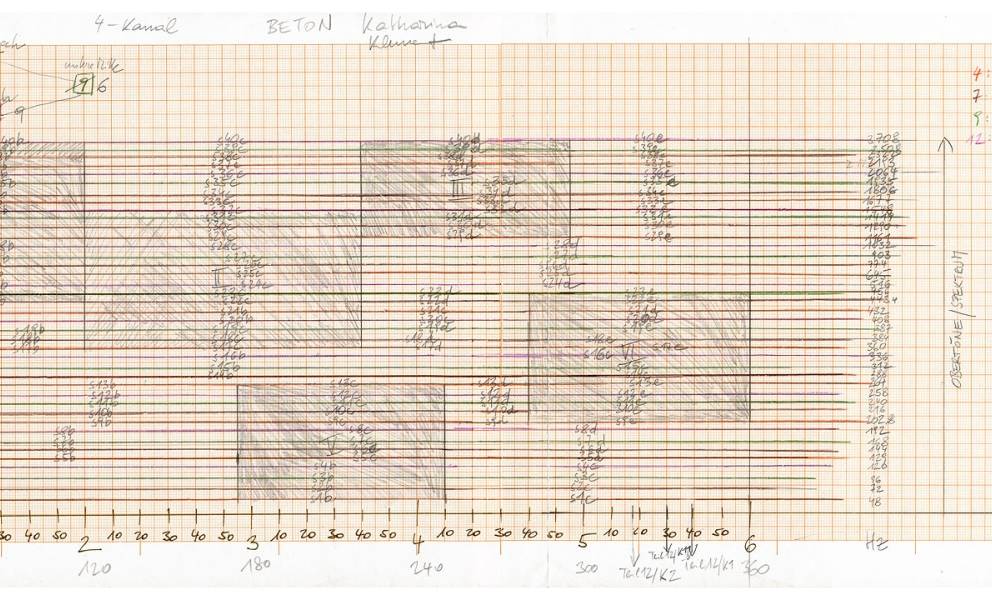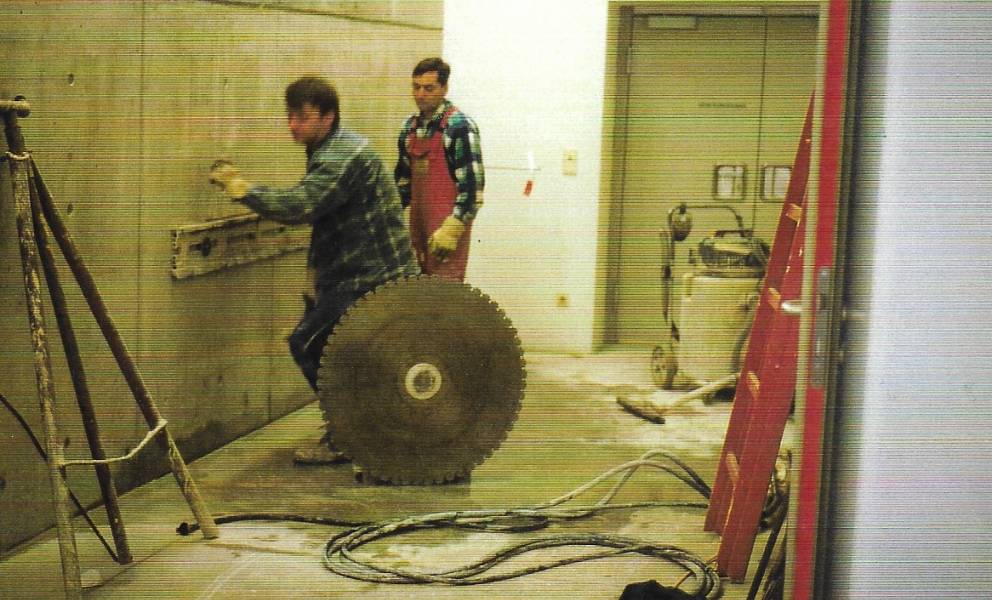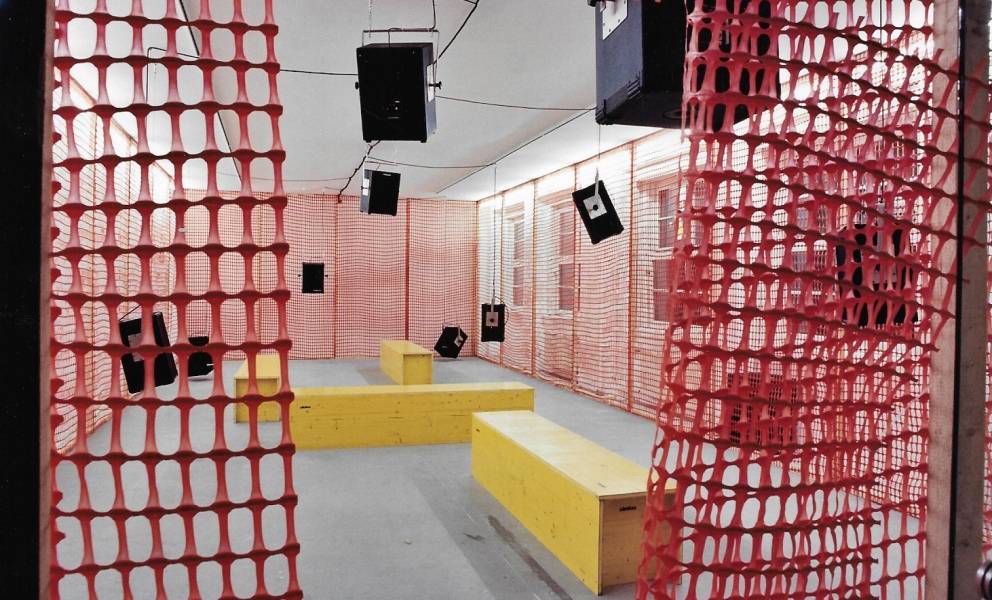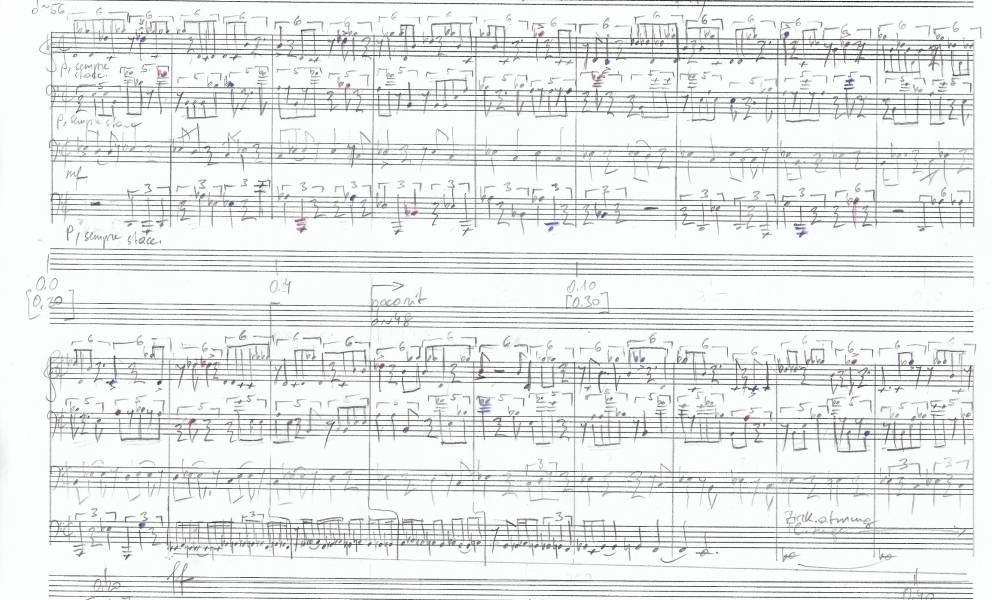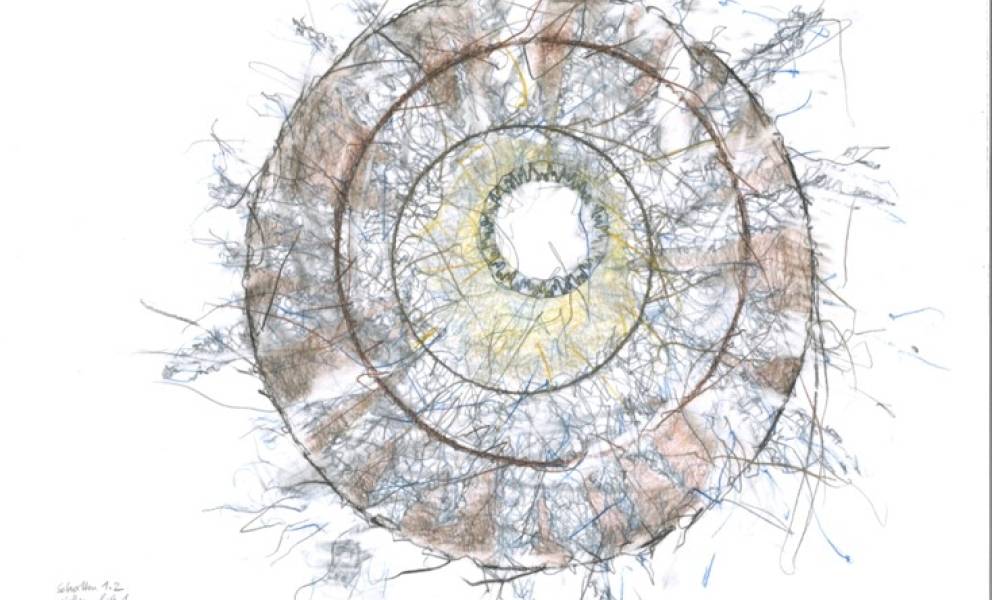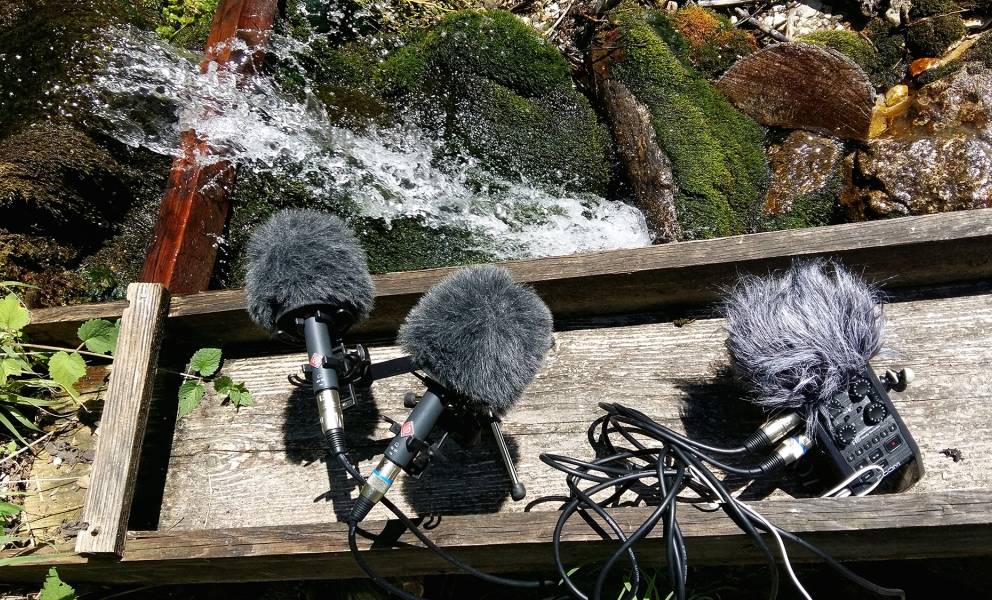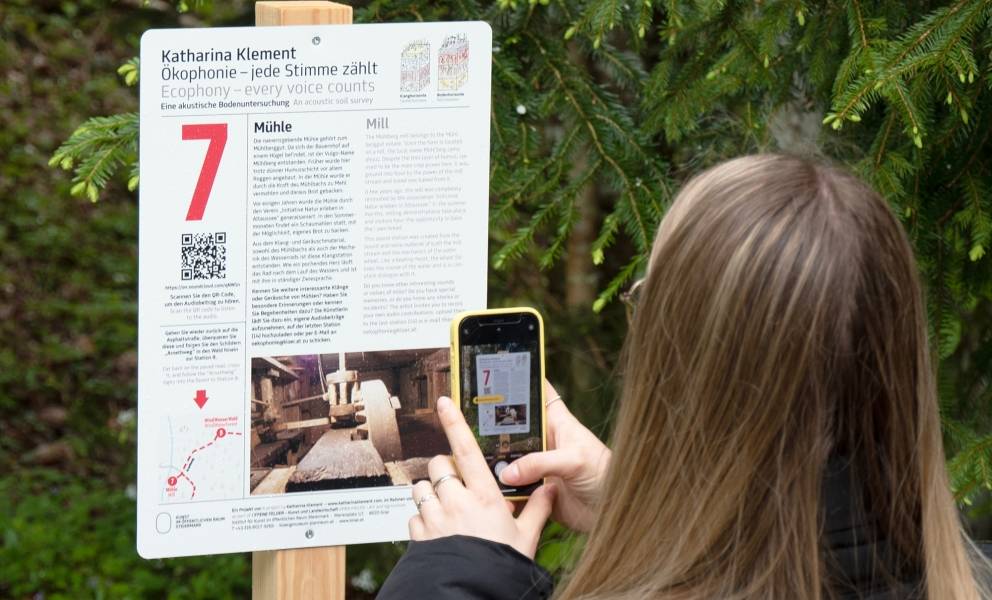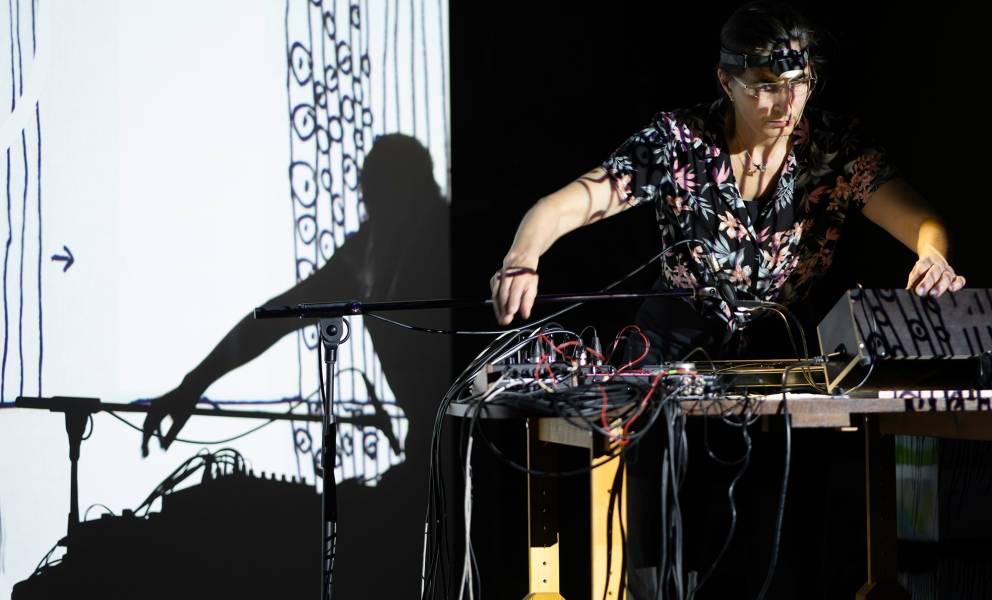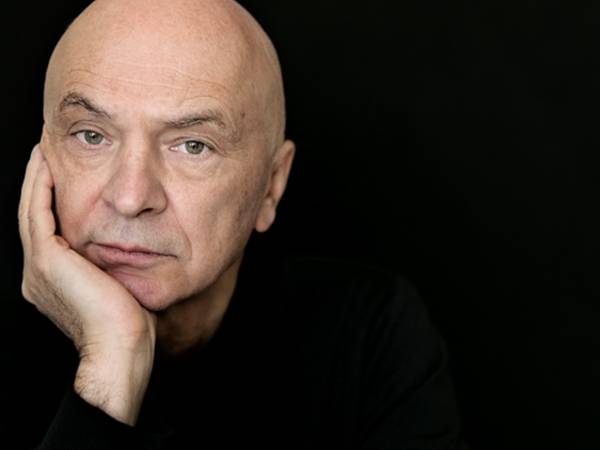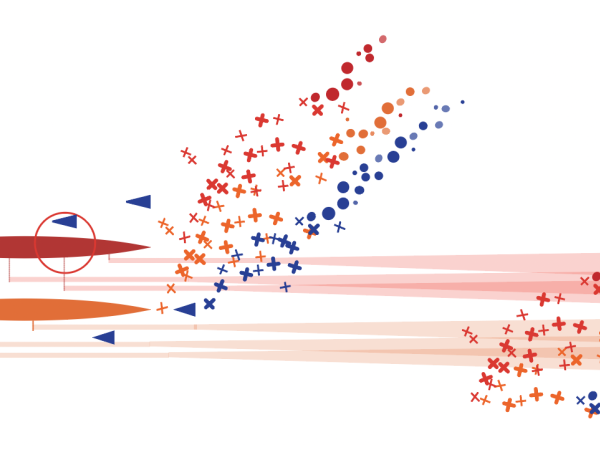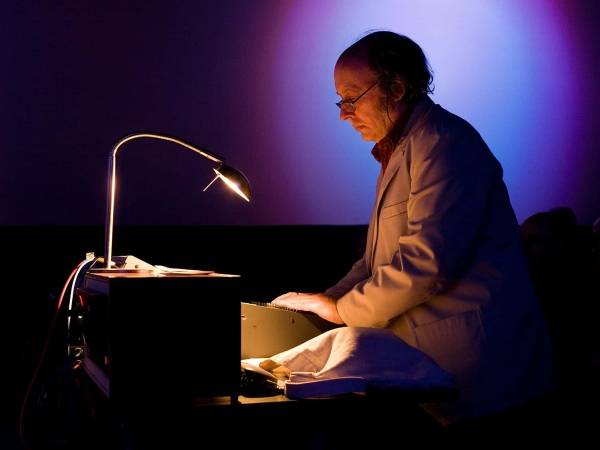6 Minuten
I would like to present some of these processes using a small selection of works. I would also like to ask how these places are changing in their definition and what they might sound like in the future. Even if the historical concept of "musique concrète" shimmers through here and there, I would like to approach my reflections independently of it.
1. Noise as an acoustic building material
One of my early works that deals with the transformation of concrete sound material into abstract music is my 10-channel sound installation "Beton" (2000/01). During several visits to building sites, where concrete parts were sawn out and cut, I collected acoustic building material: so-called noise, an unavoidable by-product of working with concrete. Penetrating the layers of this noise, uncovering layers of noise and sound, and the process of sawing, opening and finally smashing the material are the starting points of the compositional work, at that time calculated with the program CDP (Composers Desk Project). A construction site protocol with the work carried out, such as pre-drilling, horizontal and vertical saw cuts, dismantling, and cracking on the one hand and the proportions of space and sawn opening on the other, form the basis for the musical structure. Concrete spatial changes become abstract compositional procedures.
In the penultimate part of the work, 40 frequencies are layered, and all pitches are calculated from an overtone series with values of the proportions of space and a sawn-out 6-part concrete object. This tonal spectrum represents the wall that exists on site, so to speak. A total of 6 tonal blocks are cut or filtered out of it one after the other, just as it was carried out on the building site. The musical result is a constant change in timbre.
The six sound blocks cut out in turn become the basic material for the next and final part, in which granular processes take center stage. It corresponds to the concrete material "cracking" of concrete.
The rectangles cut out of the concrete are reflected in gray in the graphic score. The colored lines stand for the individual frequencies, the four different colors each represent a loudspeaker.
Concrete part 11 (starts at approx. 4.00 in the sketch, then goes into the last part 12 of the "cracking").
The actual building site has long since changed, the cut-out opening has become a passageway to a store. The most interesting phases of building sites for me are always those in which the spatial structure is not yet complete or at least the shell of the building is still standing without windows, doors and interior fittings installed, where the structural material can still be felt and heard. They serve me again and again as fleeting future models for formal ideas.
2. Field recordings as source material for instrumental realizations
2a. Transcribing rain
My composition "Jalousie" for saxophone quartet (2009) takes a different approach, but follows the same process from concretion to abstraction. At different times of day and night, I made short acoustic recordings over several days with the window open and the blinds closed.
A selection of these was analyzed both spectrally and temporally and transferred as a compositional process to the alto, tenor, baritone, and bass saxophone instruments. During a performance, both the sequence and the repetitions can be freely chosen from a total of 17 fragments notated in traditional musical notation. Like a kaleidoscope, these moments combine around a uniform location.
In the following sound example, you first hear the concrete recording of rain, which leads into the instrumental translation.
"Jalousie" fragment, Danubia Saxophone quartet
I have also used abstract formal procedures in this case of transferring rain sounds to instruments. Each instrument has between 5 and 7 pitches, each of which shifts in a certain order. Triplets, quintuplets, or sextuplets punctuated with pauses run simultaneously, percussive slaps are used as light accents ad libitum. The result is an amorphous and yet finely structured time, an irregular network, which is, however, precisely ordered and determined.
Determining the order of rain patterns seems to me to be a highly interesting task for the future. In the foreseeable future, it will probably be possible to recognize chaotic or irregular structures as orderly with appropriate analyses.
2b. Gradations: acoustic, graphic, traditional score
My series "Schütten" (2018) is once again about the transformation of concrete recordings from a cement work into an abstract instrumental language, but this time there are three gradations available. In the first gradation, the field recording serves as an acoustic score, in the second, I transferred the concrete recording into a graphic score, and in the third, I attempted a transcription in traditional notation. There are three answers to the question of how a squeaking and rattling conveyor belt becomes a solo violin piece.
In the following sound example, you can hear three field recordings that served as the basis for the violin pieces.
Schütten konkret Vl
An excerpt from the realization by Barbara Lüneburg in the first gradation.
A graphic score for the first field recording:
Realization of this graphic score by Tiziana Bertoncini (excerpt).
The third gradation, aspects or characteristics from these field recordings transferred into traditional notation, naturally bears my compositional signature.
Excerpt from this notated version, played by Annelie Gahl.
The abstraction occurs in all gradations due to the impossibility and excessive demands of being able to reproduce the sound material faithfully on the instrument. "Translation errors" are unavoidable, or rather I understand the field recordings and graphics as catalysts for the performers to set their tonal ideas in motion, who themselves have a rich individual sound stock that I could never notate. The areas of composition, improvisation, and interpretation intertwine; in my opinion, this is the ideal fusion of musical activity, and I would like to see it for general musical practice in the future.
3. Acoustic ground investigation
As part of the "Open Fields" project of the Institute for Art in Public Space Styria, I realized a work in 2022/23 that deals with a selected farm from the Salzkammergut region. My question was: What makes up the sound, the entire variety of sounds and noises, the "noise" of a farm community, an oikos? Just as there are profile sections through a body of soil that show the different soil horizons, in this work a selected farm in Altaussee is examined acoustically, penetrating its sonic layers and opening up space for as yet unknown layers.
This work, entitled Ökophonie (Ecophony), ultimately resulted in an acoustic sound trail with a total of 14 stations on the themes of this farm and the surrounding landscape. For example, it is about the landmark of Altaussee, the Loser mountain, the behavior and sound of bees, or the history of the farm's name. However, the audience is not only invited to listen to the short compositions, but they can also participate in the work themselves with audio contributions. There is the opportunity to upload sounds, tones, noises, or verbal messages. The sound trail can be followed until October 2024.
In this work, despite the closed-form parts, there is an "open edge", an undefined space that is aimed at the audience and invites communication.
"Every voice counts" is the subtitle of the work and is taken from an interview with the farmer's wife. An invitation that I address to the present and our future.
Link to the entire project: https://www.museum-joanneum.at/kioer/unser-programm/kalender/event/katharina-klement
Final statement:
Wandering back and forth between concrete and abstract places and concepts of space is an extremely fruitful compositional practice that will continue to occupy me in the future. Observing selected concrete places and deriving peculiarities or abstract structures from them is a technique that I can highly recommend. Concrete places are always changing and, on closer inspection, are often subject to strong dynamics, usually overlapping and intersecting several times.
Sometimes it is enough to perceive such places with sharpened senses and to derive inspiration for a compositional approach in the abstract. Sometimes microphones and a recording device are needed to obtain material for further transformations.
In the future, there will be no limits to the analysis techniques and algorithms for transferring data. However, it is important to me not to see these transmissions 1:1 as a "sonification", where it is purely about a sonic representation, but always within the scope of artistically free translation and transformation.
Katharina Klement
Katharina Klement works as a composer-performer in the field of composed and improvised, electronic and instrumental music. Her work includes numerous cross-linking projects within the areas of music-text video. She is particularly interested in the piano and its extended playing techniques. International concerts and performances, numerous publications, prizes, and awards. She teaches the course for electro-acoustic and experimental music at the University of Music and Performing Arts Vienna and lives in Vienna.
Article topics
Article translations are machine translated and proofread.
Artikel von Katharina Klement
 Katharina Klement
Katharina Klement 